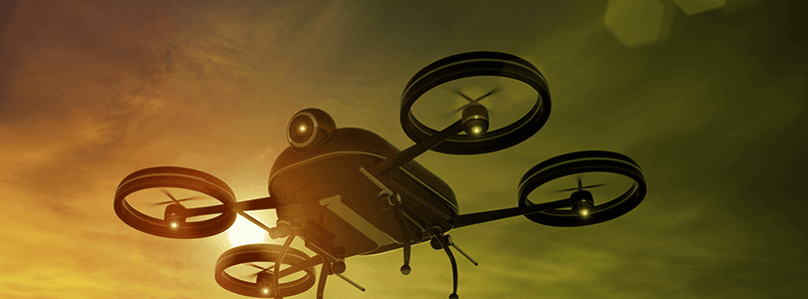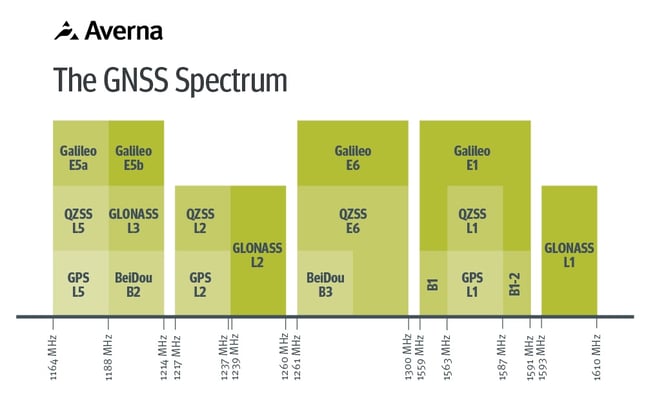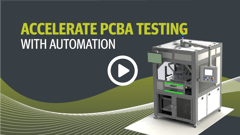What does it take to fully test a drone?

Once the villain of every sci-fi movie, drones have now completely rebranded themselves. Say goodbye to the days where we fear they will takeover the world, and say hello to the newly delivered package on your doorstep. Drones have become relatively commonplace in our day to day, and what else would be expected? Smart cities, smart factories, smart homes…drones just fit right in.
Today, drones are used to manage inventory, scout locations, make movies and make great birthday presents as a few examples. There isn’t a single industry that doesn’t benefit from the use of a drone. What they all have in common is that each drone has dozens of capabilities and they all need to work.
Testing a Drone: Where to Begin
There is not one starting point for drone testing, considering the number of different technologies that are leveraged. Depending on the size and sophistication of the drone there are boards upon boards with sensors, CPUs, cameras, GNSS trackers, electric motors, batteries, collision avoidance systems, gyroscope stabilization and others. To build a better product, it is important to look at each specialty separately.
Position & Collision Avoidance Validation
Drones can be built to fly in either GNSS mode or non-satellite mode. When leveraging GNSS, they are often built for both GPS (American) and GLONASS (Russian) to cover the whole spectrum. A GNSS is a constellation of satellites orbiting the Earth that communicate with receivers to calculate actual positions. Depending on the system, the satellites are positioned differently to best accommodate the appropriate terrain. They live within different bands and create a wide spectrum.

Depending on the application, drone positioning needs to be incredibly accurate. In the case of a toy, perfection may not be the priority but in the case of cartography or military, this may be the most important feature. This applies to both in air and on the ground.
To test positioning accurately and to cover the entire GNSS spectrum, a tool like the RP-6500 is ideal. It’s an off-the-shelf solution to keep costs reasonable and captures real-world signals, including their impairments, across the entire GNSS spectrum.
Otherwise, drones are often controlled manually with a remote control. Either way, a radar/RF specialty is required. This also applies to collision avoidance. High-end drones come equipped with sensors on all sides to avoid any obstacles that come in their path. They essentially produce 3D maps to get their bearings by using one or more of the following:
• LiDAR
• Machine vision
• Ultrasound
• Infrared
Testing Batteries
Again, with drones coming in so many different shapes and sizes, the battery needs to be the appropriate size and weight to accommodate. For bigger applications, battery life must be reliable. Battery testing must be flexible but can also be dangerous. For validation, it’s important to consider:
• Overcharging & forced discharging
• Battery (cell) cycling
• High and low temperature verification
• Temperature cycling
• Shortcut, resistance, and insulation testing
• BMS functional verification & validation
• Optical inspections for miniature defects
• Mechanical shock, leakage, and vibration test integration
Production is a different story. First, there is the fully automated cell sorting process in combination with the optical inspection of the individual cells. This includes assembled module and battery pack testing. Some tests include charge/discharge cycles, open circuit voltage (OCV), AC internal resistance (ACIR), DC internal resistance (DCIR), high voltage insulation, leak testing and BMS application tests. Second, it’s important to perform an automated optical inspection of individual cells and assembled modules or pack products to detect visual defects on a micron level (µm). These defects can occur during the cell formation or assembly process. This ensures anything less than perfect never makes it out in the world.
A cool feature of some new drones is an automatic ‘return-to-home feature’ when the battery is low. All the more reason that positioning feature better be working!
Testing Electric Motors
Testing the motor of a drone is a very similar process to testing the motor of an electric vehicle (EV). Of course, the scale is smaller, but the principles are the same. Depending on the size of the motor, some challenges facing electric motor testing can be bigger than others. A lot of high-power components are needed to manage the high inrush current required to test the different scenarios of motor acceleration. Other challenges can include vibration & safety, high revolution coupling, energy waste and more.
Creating a Quality Camera
In moviemaking, it’s safe to assume that all of the beautiful aerial shots we see were taken by a drone. Clearly these drones come equipped with some of the highest-end cameras there are. For fast and perfect camera and optical device assembly, active alignment is the way to go. The active alignment process for camera modules is a multi-step process that includes preparation, precise glue dispensation, exact component alignment, curing, and, of course, final validation. The results are always consistent, flawless and fast.
These are only some of the features that must be considered when building a drone, and these are all before final EOL testing. To perform all these tests in-house, it takes a range of specialties that is impossible to achieve through one man. Could a drone do it?
For questions on any quality procedures for drone testing, please contact Averna.
You may also be interested in…

Looking to automated PCBA validation? Look at the benefits it brings!
Get in touch with our experts or navigate through our resource center.